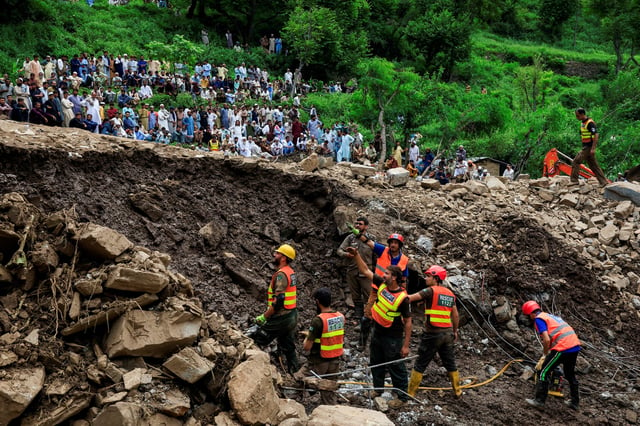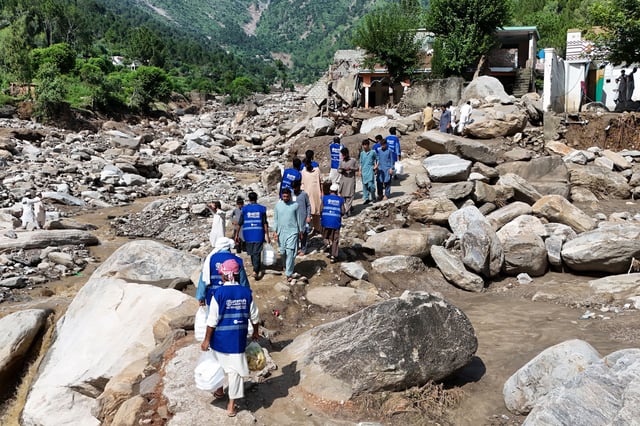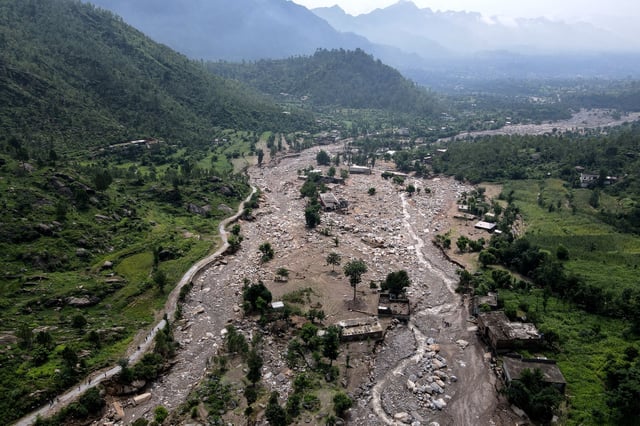Overview
- Authorities report at least 344 deaths in northern Pakistan and Pakistan-administered Kashmir, with 60 dead and more than 200 missing in Indian-administered Kashmir after sudden floods and landslides.
- In Pakistan’s Buner district, more than 200 people were killed when roughly 150 mm of rain fell in about an hour, sending torrents through mountain valleys.
- Cloudbursts—commonly defined as more than 100 mm of rain in one hour over a small area—form when moisture-laden monsoon winds rise into colder mountain air and condense into dense, rain-laden clouds.
- A World Weather Attribution analysis indicates northern Pakistan’s recent 30‑day maximum rainfall is about 22% more intense due to human-driven warming, heightening the severity of extreme events.
- Officials stress the exact time and location of cloudbursts cannot be forecast in advance, though expanded radars and new observatories are improving short-term warnings across the Himalayas.



